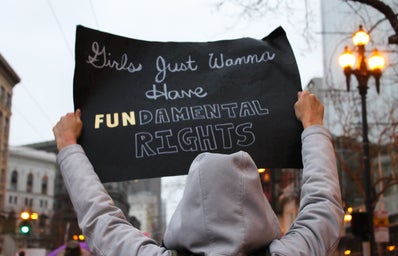50 years ago women could not run the Boston Marathon. They could not have a legal abortion, they could not fight in combat. They could not even get a credit card in their own name. That was 1970.
Today, the world looks a lot different.
The nation’s foremothers could have never predicted that 100 years after the 19th Amendment there would be 126 women serving in the United States Congress. That the nation would see not just one but six female candidates for president in one cycle. That the world would be blessed with heroines over the decades like Katherine Johnson, Janet Mock, Chanel Miller and Marcia Clark.
These women and others like them stood up, refused to be silenced and claimed their rightful place in spaces that for too long had been considered boys’ clubs. The accomplishments of such women are far-reaching and span across every sphere from politics to sports.
Related: Yes, We SHOULD All Be Feminists
In the past decade alone, the world has seen innumerable achievements that may have been unimaginable even 50 years ago.
From the #MeToo movement to the rise of activists like Malala and Greta Thunberg, women have followed in the footsteps of those leaders who came before them.
Just this past summer, the United States Women’s National Team snagged their fourth World Cup win and celebrated an even bigger win in their fight for equal pay. And on February 8, Virginia became the 38th state to ratify the Equal Rights Amendment.
In 2021 the nation might even see its first female president, marking the culmination of the dreams of fearless leaders and the sacrifices of millions of women.
Related: This 19-Year-old Feminist is Shaping the Future of Argentine Politics
But the fight is not even close to over yet, especially for the most vulnerable populations.
Today, while the world looks much better than decades before, there are still huge issues facing women, namely women of color and those in the LGBTQ+ community.
Until black mothers no longer die at a rate 3.3 times greater than white mothers and until Native American and Alaskan Native mothers no longer die at a rate 2.5 times greater than white mothers, the fight cannot end.
Until 1 in 4 women are not abused by their partners and until 1 in 5 women are no longer raped, the fight cannot end.
Until women of color are no longer the fastest-growing prison population and until transgender and gender-non-conforming individuals are no longer killed at alarming rates, the fight cannot end.
And, until every woman can see representation of herself from the media to the Oval Office, the fight cannot end.
So what does the future look like then?
It looks like fighting for paid maternity leave, freedom of choice and opportunity for all.
It looks like Megan Rapinoe and Ofelia Fernández. Like the women who testified against Harvey Weinstein and Jeffery Epstein. Like Lily Madigan and Mari Copeny. Like Elizabeth Warren and Marsai Martin.
The future is female and the future is bright.



